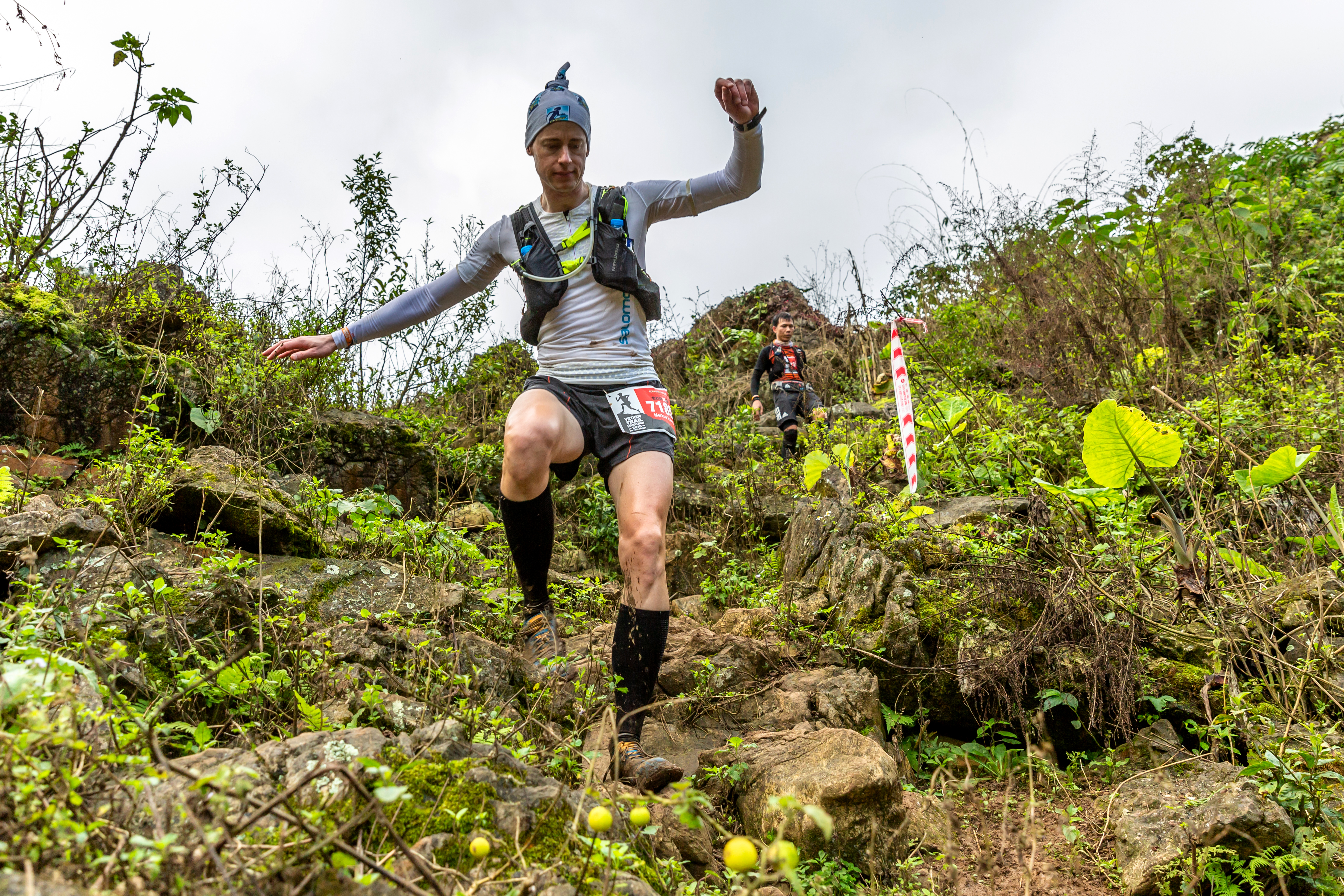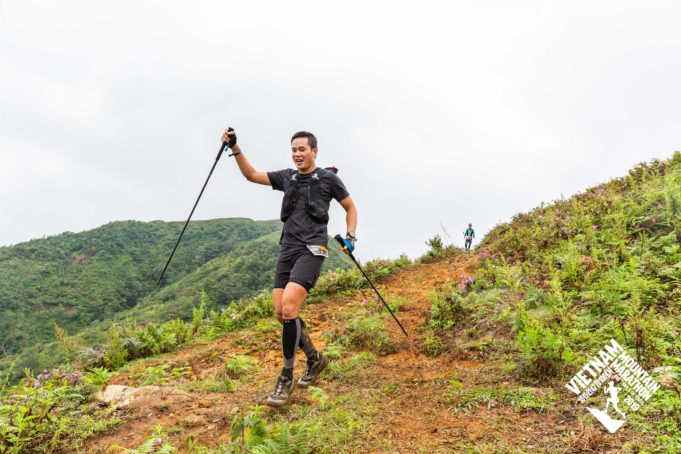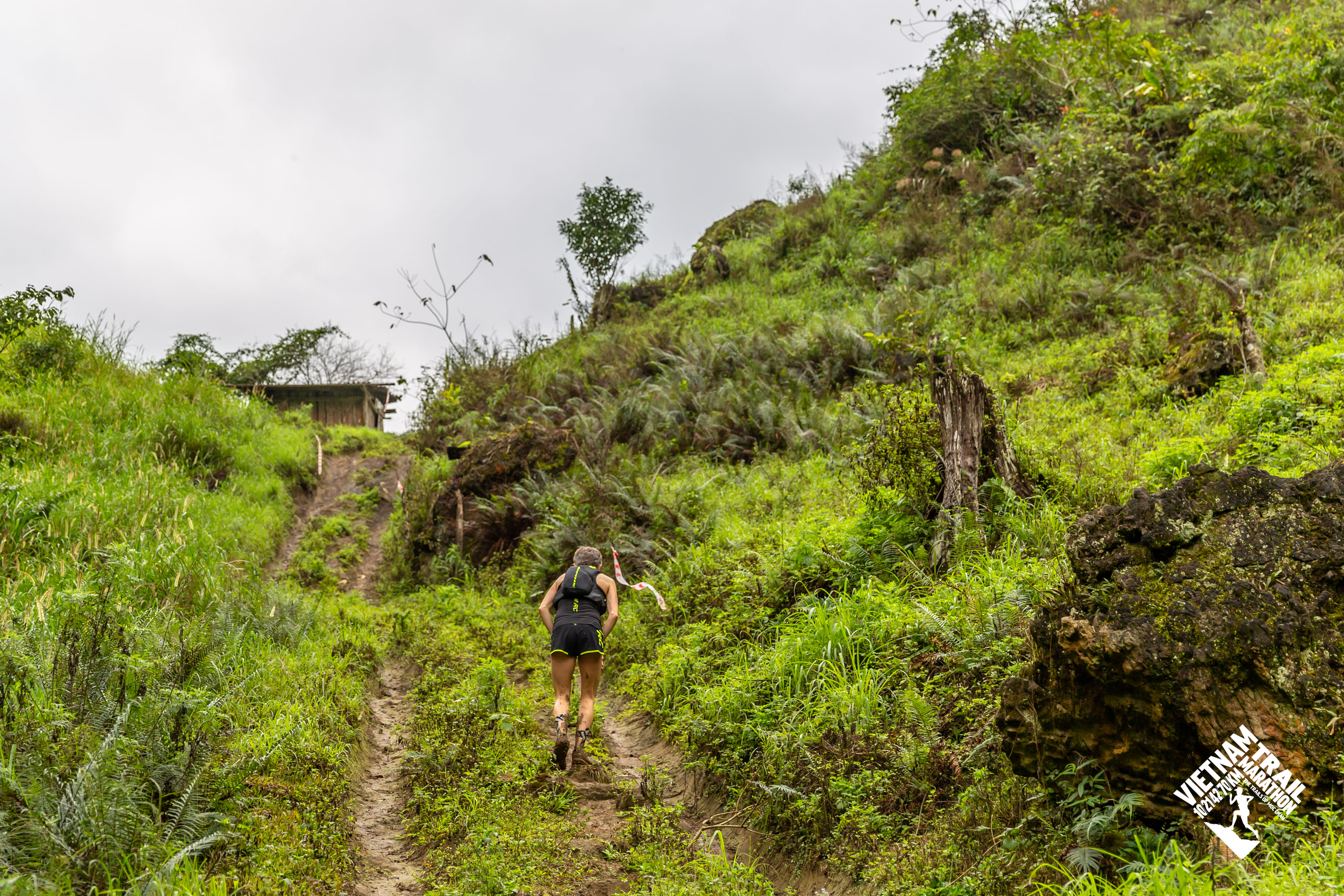Despite winning VMM 70k and other races, Jcy Ho is not a fan of running downhill. Here she explains how she has worked with her weakness together with help from John Ellis to start addressing it.


To be honest, I am still not a fan of going downhill at all. When you know your weaknesses you know it may require some time to fix them, so, you may choose to focus on your strengths, or to focus on things that can be trained and improved.
Personally, in the past I have trained myself to go faster on the uphills and the flats; whenever I see a runnable section, even if it is just for just a few seconds, I will jog it.
Imagine the time that you add over the course of a 100km if you walk these sections. Don’t forget when you are in a race, every second counts. Jogging and walking on the flats will cost you roughly the same energy output, but you will be more efficient if you jog.
Don’t laugh, but between CP3-4 at Vietnam Mountain Marathon, I actually sat and slid on some parts! I did whatever I could to complete that section. I wish there were a videographer there to capture the moment as no one believes how slow I am on the downs. I remember there was a photographer and he looked so concerned when I kept screaming!
Identify the cause
Last weekend during a 70km race in Hong Kong, John Ellis overtook me on one of the downhills, and this is what he said: “Oh my gosh, Jcy. You really need some help – I promise I will teach you how to run on the downhill!”.
Then a week later, John and I did a run together on some technical terrain.
First, he asked the reason why I cannot run downhill fast. Is it because I have been severely injured? Fear, or something else? For me, I think it is purely fear! I think it’s important to understand your own reason as well.
Run technical flats
Then he asked me to run on the technical flat, and he watched from behind. He told me, I tend to go sideways, or to find a flat surface or the most prominent stones to run onto. He then showed me how he runs, just effortlessly fast.
So he explained, on technical flats, I don’t need to find a flat surface, I just need to run on a straight line, and the legs will know how to handle it, the same as how you walk on an uneven surface on a paved road.
As long as you are aware of the surface, it’s unlikely you will twist your ankle or fall. This only happens when you are unaware or lacking focus. So, focus on what’s in front of you, roughly about 4-8m ahead.
Repeat the same session over and over again until you get the feeling and how to look further.


Run technical downhill
Next he asked me to run on the technical down. Again, I was searching for a flat surface. He said the same logic applies as running on technical flats and to try running in a straight line and to land on the ball of your feet where you gain the most balance from, not on the heel where you might fall back when the ground is slippery.


Run technical ascents
Then he told me to run uphill, the same route we ran down. He noticed something quite interesting – I am actually good at looking for the straight line when going up. Somehow, I just couldn’t perform the same way when I go down. This insight gave me confidence that I can run a straight line and use a bit of imagination and practice.


Advice
So, my advice based on this coaching to anyone scared of downhill or still at the beginner level (like me) is find the reason and slowly build up by repeating the same route over and over again until you have that confidence.
Hopefully, in a few months, I will be able to tell you how fast I can go downhill!



